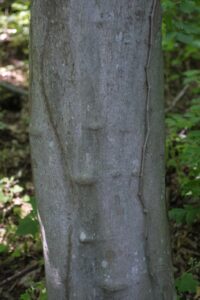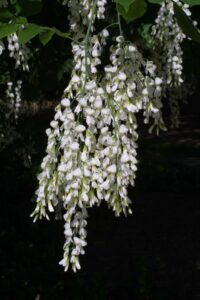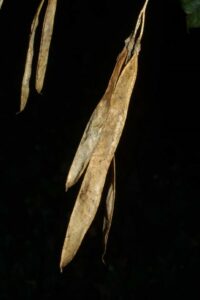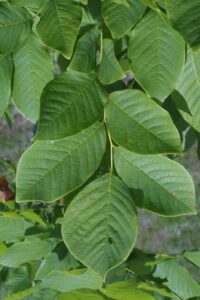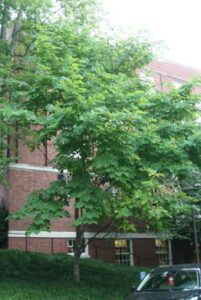Botanical Name:
Cladrastis kentukea
Family Name:
Fabaceae / pea
Description:
The yellowwood is a medium-sized deciduous tree with smooth, gray bark and copious clusters of aromatic white flowers in. This tree gets its name from its interior wood, which ranges from yellow to pale brown in color.
Size:
30 – 50′
Habitat and Range:
Native to Kentucky (as its scientific name hints), the yellowwood is one of the rarest tree species in eastern North America. Found on the limestone cliffs of Kentucky, Tennessee, and North Carolina, with scattered populations from southern Indiana to Alabama, and west into the Ozarks of Missouri, Arkansas, and far eastern Oklahoma.
Attributes:
Yellowwood leaves are alternate and pinnately compound, eight to ten inches long, with seven to eleven oval leaflets (3-4″) that turn a bright, clear yellow in autumn. Its branching structure and heavy, hard wood make it highly susceptible to ice damage and limb loss.
Wildlife Value:
Due to its rarity, nowhere is the yellowwood considered a common component of the flora. However, its graceful, often multi-trunked frame makes for a comely abode for songbirds and its resplendent inflorescences attract bees, butterflies, and other pollinators.
Did you Know?
• The yellowwood transplants well and is somewhat tolerant to road salts, which, along with its attractive shape and bountiful beautiful flowers, makes it a popular shade tree and ornamental along parkways.
• Its rarity and bizarre distribution are likely the result of repeated glaciations, as ice sheets advanced and retreated across the continent.
• Though a member of the pea family, the yellowwood lacks root nodules and is therefore not a nitrogen fixer.
Benefits to Our Community (based on carbon dioxide sequestered, storm water runoff avoided, and air pollution removed each year):
Over the next 15 years, this tree will give back $90 worth of benefits to our community.
